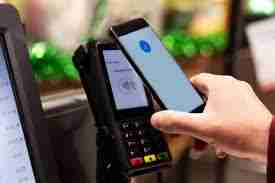The mobile money market has undergone rapid development over the past decade, emerging as a critical enabler of financial inclusion and digital transactions. By leveraging mobile devices to offer accessible financial services, mobile money platforms have bridged significant gaps in banking, especially across emerging economies where traditional infrastructure remains underdeveloped. Today, mobile money plays a pivotal role in promoting cashless economies, empowering small businesses, and transforming how individuals and communities access financial services.

Evolution and Development of the Mobile Money Market
The development of the mobile money market began as a solution to address financial exclusion in regions with limited access to banks. The initial focus was on enabling basic peer-to-peer (P2P) transfers through mobile phones, offering an affordable, secure, and convenient alternative to cash transactions.
One of the earliest and most successful examples is Kenya's M-Pesa, launched in 2007. Its success demonstrated the potential of mobile money to reach underserved populations and catalyzed the development of similar platforms worldwide.
Since then, mobile money has evolved significantly, offering a wide array of services, including:
Bill payments
Merchant transactions
Cross-border remittances
Mobile savings and microloans
Insurance and digital wallets
The market's development has not only expanded the types of financial services available but also increased accessibility for millions of unbanked individuals across Africa, Asia, Latin America, and other regions.
Key Drivers Behind Market Development
Several factors have contributed to the development and expansion of the mobile money market:
1. Increased Mobile and Internet Penetration:
The widespread availability of affordable mobile devices and expanding network coverage have played a crucial role in bringing mobile money services to underserved areas.
2. Financial Inclusion Policies:
Governments, regulatory bodies, and international organizations have promoted mobile money as a tool to improve access to financial services for the unbanked and underbanked.
3. Technological Innovation:
Advancements in mobile technology, secure payment platforms, and real-time processing have enhanced the reliability, security, and convenience of mobile money services.
4. Demand for Digital Payments:
The global shift toward cashless transactions, driven by convenience, safety, and pandemic-related hygiene concerns, has fueled mobile money adoption.
5. Public-Private Partnerships:
Collaborations between telecom operators, financial institutions, fintech firms, and development agencies have accelerated mobile money development, especially in emerging markets.
These drivers continue to shape the mobile money landscape, expanding its reach and diversifying its services.
Regional Development Insights
The development of the mobile money market varies by region, with notable progress in:
Sub-Saharan Africa:
The region leads in mobile money development, with platforms like M-Pesa, MTN Mobile Money, and Airtel Money providing essential financial services. Mobile money has become integral to daily life, supporting transactions, savings, and business operations.
Asia-Pacific:
Significant development is underway in Asia, with countries like India, Bangladesh, Indonesia, and the Philippines driving mobile money growth. Government-led initiatives and fintech innovation have enhanced financial access for millions.
Latin America:
Mobile money development is gaining momentum in Latin America, where increasing smartphone adoption and demand for secure digital transactions are driving growth, particularly in Brazil, Mexico, and Colombia.
Developed Markets:
In North America and Europe, mobile money has evolved into advanced digital wallets and mobile payment apps, focusing on transaction convenience, e-commerce integration, and contactless payments.
Technological Development Enhancing Market Capabilities
Technology has been at the heart of mobile money development, enabling secure, scalable, and user-friendly platforms. Key technological advancements include:
Biometric Authentication: Enhancing user security and trust with fingerprint and facial recognition.
AI-Powered Fraud Prevention: Real-time detection and prevention of fraudulent activities.
Blockchain Integration: Improving transparency and reducing costs, especially for cross-border transactions.
Offline Transaction Capabilities: Allowing payments in areas with limited connectivity, increasing accessibility.
These innovations continue to improve the efficiency, reliability, and appeal of mobile money services globally.
Future Development and Market Opportunities
The mobile money market is expected to experience further development, with significant opportunities for:
Expanding services to rural and underserved populations
Diversifying financial offerings, including microloans, savings, and insurance
Integrating mobile money with e-commerce platforms and gig economy apps
Strengthening partnerships between mobile operators, banks, and fintech firms
Enhancing regulatory alignment to support innovation and market growth
As the market develops, mobile money will play an increasingly vital role in driving financial inclusion, economic empowerment, and digital transformation across regions.
Conclusion
The development of the mobile money market represents one of the most significant advancements in global financial services, enabling millions to access secure, affordable, and convenient financial solutions. With continued technological progress, supportive regulatory environments, and collaborative industry efforts, mobile money is poised to further evolve, transforming financial ecosystems and fostering inclusive economic growth worldwide.




